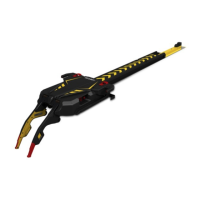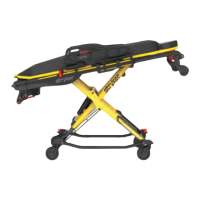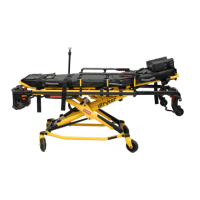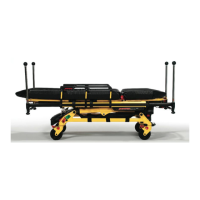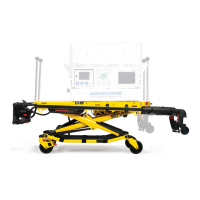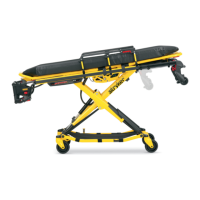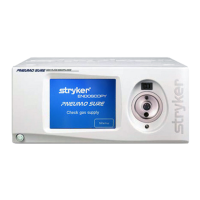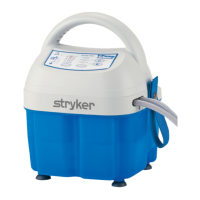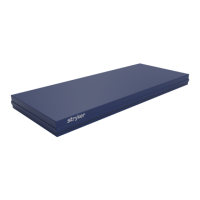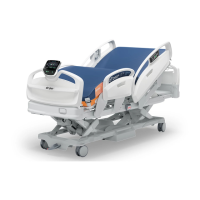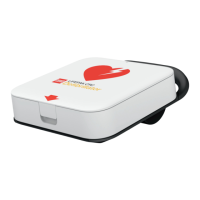WWaarrnniinngg//CCaauuttiioonn//NNoottee DDeeffiinniittiioonn
The words WWAARRNNIINNGG, CCAAUUTTIIOONN, and NNOOTTEE carry special meanings and should be carefully reviewed.
WWAARRNNIINNGG
Alerts the reader about a situation which, if not avoided, could result in death or serious injury. It may also describe
potential serious adverse reactions and safety hazards.
CCAAUUTTIIOONN
Alerts the reader of a potentially hazardous situation which, if not avoided, may result in minor or moderate injury to the
user or patient or damage to the product or other property. This includes special care necessary for the safe and effective
use of the device and the care necessary to avoid damage to a device that may occur as a result of use or misuse.
NNoottee -- Provides special information to make maintenance easier or important instructions clearer.
SSuummmmaarryy ooff ssaaffeettyy pprreeccaauuttiioonnss
Always read and strictly follow the warnings and cautions listed on this page. Service only by qualified personnel.
WWAARRNNIINNGG
• Do not operate PPoowweerr--LLOOAADD with a voltage that is inconsistent with the rating on the product.
• Do not operate PPoowweerr--LLOOAADD above its duty cycle to avoid the risk of equipment damage or smoke hazard.
• Do not connect PPoowweerr--LLOOAADD to a 24 VDC vehicle circuit. Always connect PPoowweerr--LLOOAADD to a 12.8 VDC-15.6 VDC
vehicle circuit that is on a 15A fuse/breaker to prevent power hazards.
• PPoowweerr--LLOOAADD operates at 13.56 MHz when you use PPoowweerr--LLOOAADD controls with a powered cot (PPoowweerr--PPRROO XT or
PPoowweerr--PPRROO IT) that could interfere with other equipment that operate at this frequency band.
• The use of accessories, transducers, and cables, other than those specified, with the exception of transducers and
cables that are sold by Stryker as replacement parts for internal components, may result in increased emissions or
decreased immunity of the PPoowweerr--LLOOAADD system.
• Do not use the PPoowweerr--LLOOAADD system and the PPoowweerr--PPRROO cot adjacent to or stacked with other equipment. If adjacent
or stacked use is necessary, observe the PPoowweerr--LLOOAADD system to confirm normal operation in the configuration where it
will be used.
• PPoowweerr--LLOOAADD operates primarily at these frequencies: 70 - 85 kHz for inductive charging and 13.56 MHz±7 kHz,
Amplitude Modulated (OOK), ERP: -82.37 dBm. The inductive charging can operate between these frequencies: 70 -
125 kHz. Other equipment may interfere with the PPoowweerr--LLOOAADD system, even if that other equipment complies with
CISPR emission requirements.
• Always adjust the cot load wheel height to match the vehicle deck height as specified in the Operations Manual for your
cot model.
• Always use a rail clamp assembly for all cots without the PPoowweerr--LLOOAADD option. PPoowweerr--LLOOAADD is compatible with the
PPeerrffoorrmmaannccee--PPRROO XT, PPoowweerr--PPRROO XT, and PPoowweerr--PPRROO IT cots with the PPoowweerr--LLOOAADD option only. In certain
situations, you can use PPoowweerr--LLOOAADD as a standard antler for most X-frame cots.
• Always use a PPoowweerr--LLOOAADD compatible cot with the Stryker Model 6390 PPoowweerr--LLOOAADD system. Injury may result if a
non-compatible cot is used in the Stryker Model 6390 PPoowweerr--LLOOAADD system.
• Always install the cot fastener system as described in this manual. Improper installation can result in injury. Make sure
that, at a minimum, your configuration is tested to meet the National Truck Equipment Association/Ambulance
Manufacturer’s Division Standard 004, Litter Retention System Static Test (AMD-004).
• Take special precautions regarding electromagnetic compatibility (EMC) when you use medical electrical equipment.
Install and place the cot fastener system into service according to the EMC information in this manual. Portable and
mobile RF communications equipment can affect the function of the cot fastener system.
• Always use two installers when you lift and position the transfer and trolley assembly to avoid the risk of injury.
• Always keep hands, fingers, and feet away from moving parts.
• Always wear appropriate eye protection while you operate a saw. Secure the item that you are cutting and be aware of
the area around your cutting location.
• Always allow for bumper clearance. Inadequate bumper clearance could result in patient or operator injury.
6390-709-001 Rev AB.1 3 EN
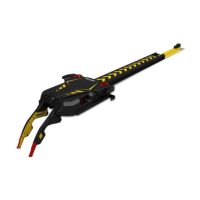
